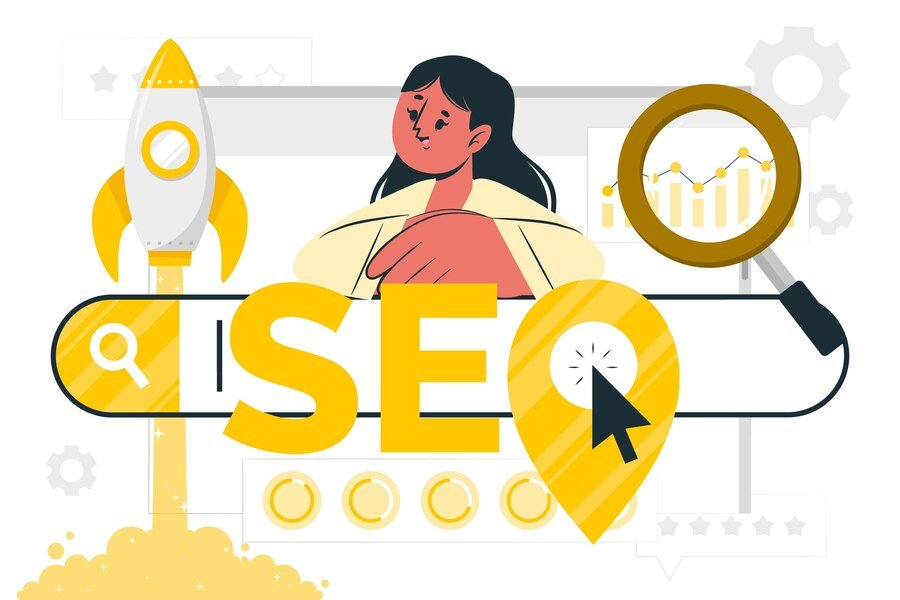What is SEO? Search Engine Optimization is a powerful digital marketing strategy that boosts a website’s visibility on search engines like Google, Bing, and Yahoo. By targeting specific keywords or phrases, SEO ensures your site is easily discoverable. This guide explores the definition, importance, history, types of SEO, and strategies such as local, international, and eCommerce SEO.
Definition of SEO
SEO stands for Search Engine Optimization. It is the practice of optimizing your website to make it appear higher in search engine results. This involves using techniques to improve your website’s structure, content, and technical aspects so search engines can rank it as relevant and helpful.
When people search for something online, search engines show results based on various factors, such as keywords, website quality, and user intent. Keywords are the specific words or phrases that people type into search engines. For example, if someone types “best pizza near me,” search engines look for websites that mention those keywords.
SEO is not just about stuffing keywords into your website. It is about creating a better experience for users by providing valuable information, fast-loading pages, and easy navigation.
Importance of SEO
SEO is crucial because it helps websites attract visitors without paying for ads. Here are some key reasons why SEO matters:
- Higher Visibility: Websites that rank on the first page of search results receive most of the traffic. If your website isn’t visible, people won’t find it.
- Increased Credibility: Users trust websites that appear at the top of search results because search engines rank them as the most reliable.
- Cost-Effective: Unlike paid ads, SEO brings organic (free) traffic. While it requires effort, the long-term benefits outweigh the costs.
- Better User Experience: SEO involves improving website speed, mobile-friendliness, and content relevance, which enhances user satisfaction.
- Competitive Edge: With SEO, small businesses can compete with larger companies by targeting niche audiences.
For example, a local bakery with strong SEO can attract more customers searching for “fresh pastries near me” than a bigger bakery with poor SEO.

History of SEO
The journey of SEO began in the 1990s when search engines like Yahoo and AltaVista were popular. Over time, Google revolutionized search with its algorithm-based ranking system.
- 1990s: The early days of SEO involved keyword stuffing and backlink farming, where websites used excessive keywords and links to manipulate rankings.
- 2000s: Google introduced algorithms like PageRank and updates like Panda and Penguin. These aimed to reduce spammy practices and prioritize high-quality content.
- 2010s: Mobile optimization and voice search became important as more users searched on smartphones. Content became king, with search engines focusing on relevance and user intent.
- 2020s: SEO now emphasizes artificial intelligence (AI), local searches, video content, and user experience.
Modern SEO is more user-focused, aiming to provide helpful and accurate results instead of tricking search engines.
Types of SEO
SEO is a broad field that includes several types, each with its specific purpose. The main types are:
1. On-Page SEO
This focuses on optimizing individual web pages for specific keywords. It involves:
- Writing high-quality, keyword-rich content.
- Using proper headings (H1, H2, H3).
- Adding meta descriptions and alt text for images.
- Ensuring mobile-friendliness.
2. Off-Page SEO
Off-page SEO involves actions taken outside your website to improve rankings. The most common strategies include:
- Building quality backlinks from trusted sites.
- Engaging on social media platforms.
- Encouraging positive online reviews.
3. Technical SEO
Technical SEO improves the backend of your website so search engines can crawl and index it efficiently. It includes:
- Increasing site speed.
- Fixing broken links.
- Creating an XML sitemap.
- Adding an SSL certificate for security.
4. Content SEO
This type focuses on creating relevant and engaging content. Examples include:
- Blogs.
- Infographics.
- Videos.
- FAQs (Frequently Asked Questions).
5. Local SEO
Local SEO helps businesses attract nearby customers. It involves:
- Optimizing your Google Business Profile.
- Adding location-based keywords like “near me.”
- Collecting customer reviews.

6. International SEO
International SEO focuses on reaching audiences in different countries and languages. This requires:
- Using hreflang tags for multilingual content.
- Targeting international keywords.
- Hosting your website in the target country.
7. eCommerce SEO
eCommerce SEO is designed for online stores. It emphasizes:
- Optimizing product pages.
- Using product-specific keywords like “buy running shoes online.”
- Adding clear product descriptions and images.
Local vs. International vs. eCommerce SEO
Local SEO
Local SEO helps small businesses attract customers in a specific area. For example, a dentist in Ellington, CT, would use local SEO to appear in search results for “best dentist in Ellington.”
- Key Features:
- Google Business Profile optimization.
- Local citations in directories like Yelp.
- Use of keywords with local intent.
International SEO
International SEO is for businesses targeting global audiences. For example, a software company selling in the U.S., Europe, and Asia would need to localize content for each region.
- Key Features:
- Multilingual websites.
- Region-specific keywords.
- Adapting to cultural differences.
eCommerce SEO
eCommerce SEO focuses on selling products online. For example, an online clothing store would optimize its product listings and categories to attract shoppers.
- Key Features:
- Detailed product descriptions.
- Reviews and ratings.
- Fast-loading pages.

How to Get Started with SEO
Here are simple steps to start with SEO:
- Do Keyword Research: Find keywords your audience is searching for.
- Optimize Your Website: Improve content, fix errors, and speed up loading times.
- Create Quality Content: Write blogs, make videos, or design infographics.
- Build Backlinks: Partner with other websites to share links.
- Track Your Progress: Use tools like Google Analytics to measure success.
Search Engine Optimization is essential for any website looking to grow online. By understanding the basics of SEO, you can improve your visibility, attract more visitors, and build a successful online presence. Whether you’re focusing on local SEO for a small business, international SEO for a global audience, or eCommerce SEO for online sales, the principles remain the same: provide value, be user-friendly, and stay updated with SEO trends.
SEO is not a one-time effort; it’s an ongoing process. By consistently applying best practices, you can achieve long-term success and make your website a go-to destination for users.

